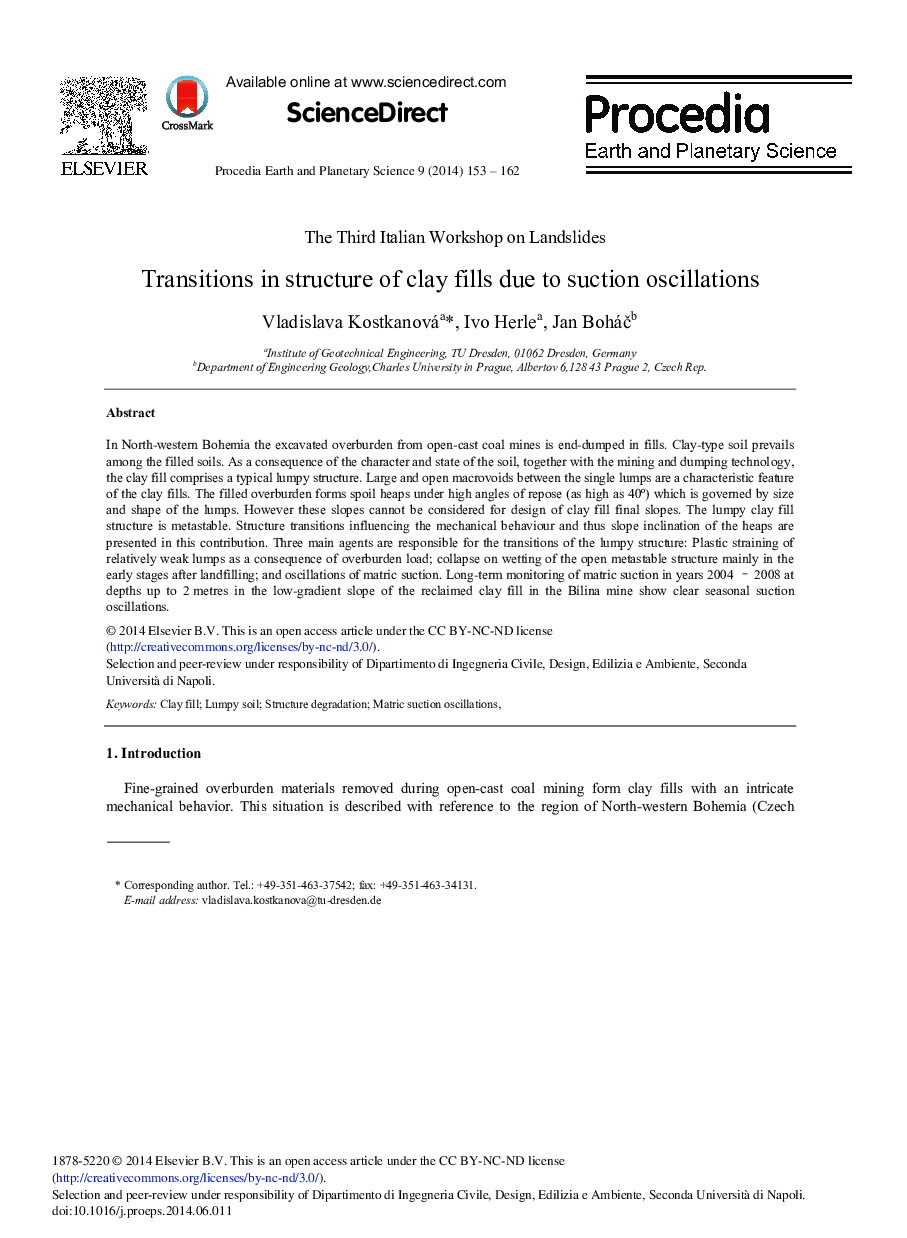| Article ID | Journal | Published Year | Pages | File Type |
|---|---|---|---|---|
| 4674996 | Procedia Earth and Planetary Science | 2014 | 10 Pages |
In North-western Bohemia the excavated overburden from open-cast coal mines is end-dumped in fills. Clay-type soil prevails among the filled soils. As a consequence of the character and state of the soil, together with the mining and dumping technology, the clay fill comprises a typical lumpy structure. Large and open macrovoids between the single lumps are a characteristic feature of the clay fills. The filled overburden forms spoil heaps under high angles of repose (as high as 40°) which is governed by size and shape of the lumps. However these slopes cannot be considered for design of clay fill final slopes. The lumpy clay fill structure is metastable. Structure transitions influencing the mechanical behaviour and thus slope inclination of the heaps are presented in this contribution. Three main agents are responsible for the transitions of the lumpy structure: Plastic straining of relatively weak lumps as a consequence of overburden load; collapse on wetting of the open metastable structure mainly in theearly stages after landfilling; and oscillations of matric suction. Long-term monitoring of matric suction in years 2004 - 2008 atdepths up to 2 metres in the low-gradient slope of the reclaimed clay fill in the Bílina mine show clear seasonal suction oscillations.
